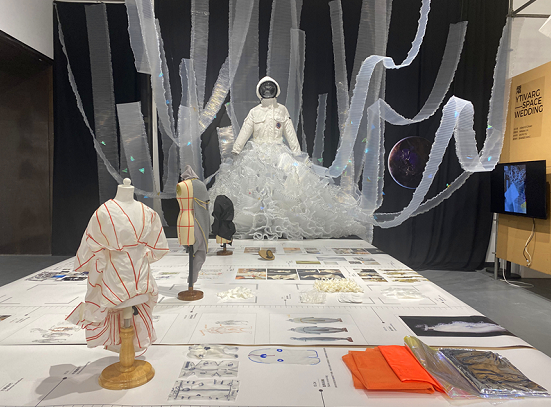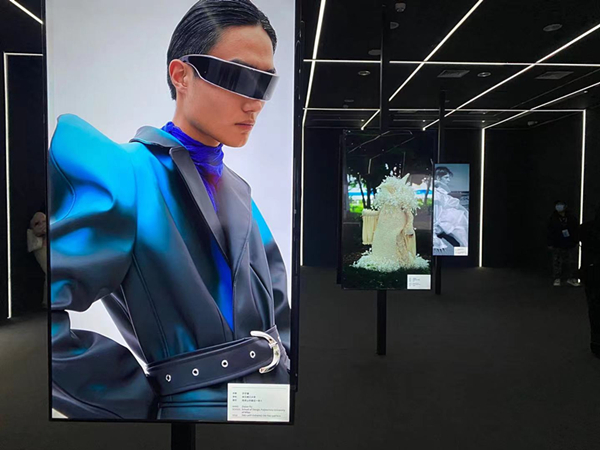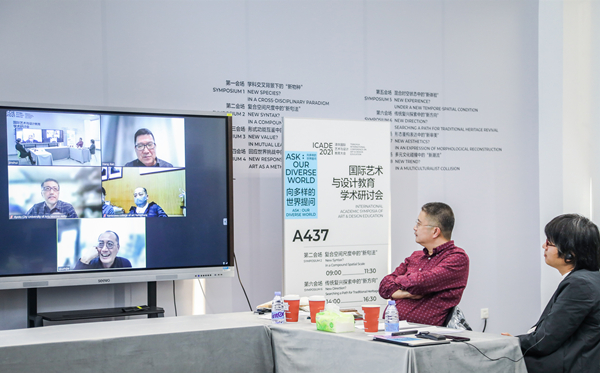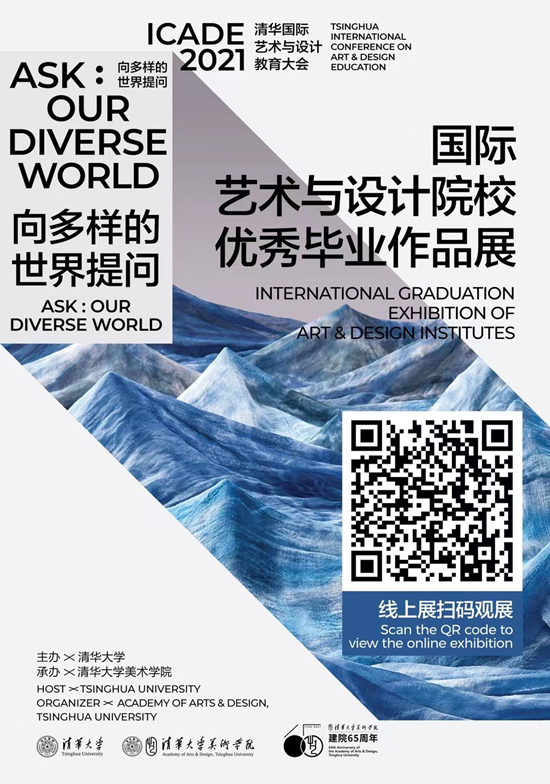
A conference held by China's Tsinghua University last weekend gathered top international artists and designers to explore the future of mankind, in a world shaped by art, design and technology.

"The world is facing huge changes not seen for a century," Lu Xiaobo, dean of the Academy of Arts and Design of Tsinghua University (AADTHU), told China.org.cn. "The rapid development of technology and the global pandemic have caused people to think about the future direction of mankind."
The 2021 Tsinghua International Conference on Art & Design Education (ICADE 2021), under the theme "ASK: Our Diverse World," was held from Oct. 29 to 31. The conference brought together academics, experts and students from more than 50 top art and design institutes around the world, including the Central Academy of Fine Arts, Royal College of Art, Tokyo University of the Arts and Parsons School of Design.
One year in the making, this was the first time Tsinghua has held such a grand global event, building an international academic exchange platform as well as a bridge of multicultural communication. Composed of five sections - Presidential Forum, Academic Symposia, Graduation Exhibition, Workshops and Student Forum - the conference displayed new trends in art and design education, seeking the epochal value of art and design between difference and consensus. However, many overseas participants were unable to attend in person due to the pandemic, and so took part via video link.

"As we are at a critical moment in human progress, we want to identify the future historic mission for arts and design, and what talent we want to nurture when technologies bring big changes to people's lifestyles and production methods," Lu said. "We are facing increasingly complicated problems, and can't rely on a single discipline to find systematic and complete solutions - we have to have cross-discipline consciousness and abilities. At the same time, new ideas, knowledge and technologies are always emerging."
Designs for the new post-pandemic world
"We need to work harder to show the value and unique contributions of arts and design education. For the education of art and design, we have challenges and opportunities. In the post-epidemic era, we cannot go back to the past - we must create a new future," said professor Naren Barfield, deputy vice-chancellor and provost at the Royal College of Art, during the ICADE 2021's Presidential Forum on Oct. 29. He explained that education models have been changed by the global crisis caused by the pandemic, and added that people need to adapt to new situations but can open up to the wider world through new technologies and online communication.
A total of 26 heads of leading art and design institutes brainstormed about the top-level framework of arts and design education during the forum, as well as how higher-education institutes can play their part in adapting to and innovating for the new normal.
Allyson Green, dean of the Tisch School of the Arts in New York University, believes that as humankind is undergoing an information technology revolution, artists and designers must work with scientists, engineers, sociologists and global health practitioners to come up with creative solutions to complex global issues.

"Art is like a fire that evokes people's passion for life and gives people their yearning for life. Design is an important force in responding to various social crises. We should discuss and conduct exchanges on new topics in global arts and design with an open attitude, and construct a new future-facing pattern," agreed Fan Di'an, president of the China Artists Association.
Xu Fen, president of the Hubei Institute of Fine Arts, noted that future arts and design education should integrate scientific theory and practice, break through disciplinary barriers, and develop in the direction of rationality, innovation and humanity care. "It is not a provider of digital entertainment, but a platform and laboratory for interdisciplinary integration," Xu said.

Lu Xiaobo added that the technological revolution, industrial transformation and pandemic are reshaping the ways humans live, as well as the existing forms, division of labor and organizational methods of many industries. This in turn is changing the relationships between people and among countries. "Design, as the ability of human beings to shape their own environment, always contains an ethical responsibility," he said. "It is a powerful approach to shaping our daily lives, social relationships and even defining ourselves."
Beyond the future and the world
More than 60 professors and scholars joined eight academic symposia on Oct. 30, both in-person and online, discussing a range of topics from artificial intelligence and Metaverse, to quantum computing. They covered themes including the new species in a cross-disciplinary paradigm, new value in mutual learning of form and function, new direction in searching for a path for traditional heritage revival and the new aesthetics in an expression of morphological reconstruction.

Meanwhile, the International Art & Design Student Forum collected academic productions among graduate students, doctoral students and young scholars from China and around the world, through two sections: "RE: ACTOR - International Forum of College Student Creativity" and "ASK: Our Diverse World - International Art and Design Doctoral Forum." The aim was to build a platform for high-level, open-minded and multi-field academic exchanges, pushing forward the development of arts and design and fostering integration between different disciplines.
From Oct. 29 to Nov. 15, the International Art & Design Workshops are showcasing a range of designs by teachers and students, including "zero-gravity" dresses designed for outer space, robots, and art installations on humanity's response to the impending ecological crisis. In addition, the International Graduation Exhibition of Art & Design Institutes, plus its online exhibition (https://ic.ad.tsinghua.edu.cn/2021show/), displays the teaching achievements of 50 leading art and design institutes. Composed of 10 sections and more than 2,000 works, it provides a platform for students to communicate with one another from diverse professional perspectives.

"I think that while the world is yet full of hope, there are still misunderstandings, cultural gaps and even conflicts between peoples," Peng Gang, vice president of Tsinghua University, told China.org.cn. "But when emotions and spiritual aesthetic elements pursuing beauty can be awakened, that will eventually help the world change and make it more harmonious."
He continued, "At this time, on such an occasion, we can allow so many accomplished scholars, artists and young students from all around the world to communicate in various ways here in this event. On its own this is a very precious attempt in this special era, helping arts, design, beauty, and the integrated development of aesthetics and technologies better connect."